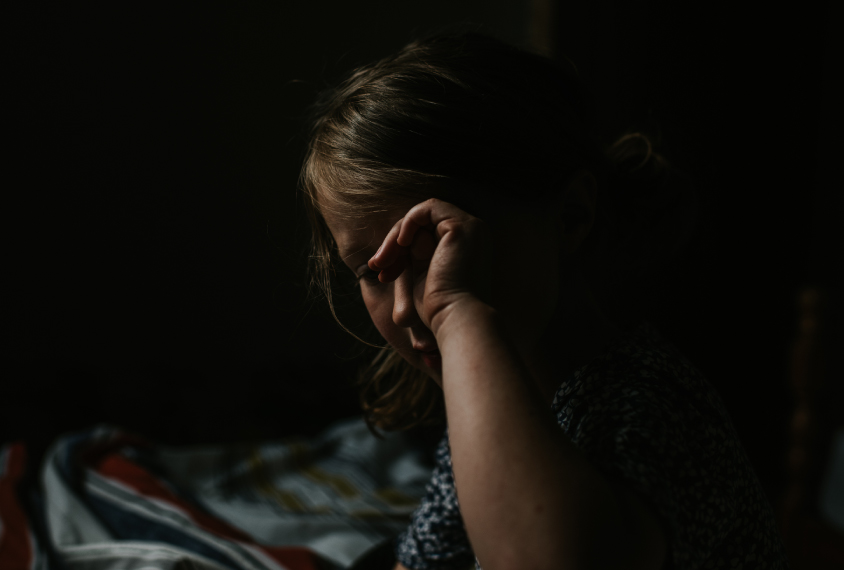Autistic children are more likely to have rare variations in genes linked to circadian rhythms and insomnia than are their unaffected siblings, according to a new study.
The findings support a genetic link between sleep, circadian rhythms and autism, says Thomas Jongens, associate professor of genetics at the University of Pennsylvania in Philadelphia, who was not involved in the study.
Most children with autism have trouble sleeping, which may exacerbate other challenges associated with the condition. Sleep problems hint at disruptions in the circadian clock, a cellular timer that keeps cells in sync with the day-night cycle.
Previous studies have highlighted a genetic basis for sleep disruption in autism: Mice missing BMAL1, a core circadian clock gene, have atypical social behaviors and motor difficulties, for example. And people with autism — even those who sleep well — are twice as likely as non-autistic people to carry alterations in genes that control the circadian clock.
But the new study took a “unique perspective” by focusing on copy number variants (CNVs) — deletions or duplications of large chunks of DNA — says Olivia Veatch, assistant professor of psychiatry and behavioral sciences at the University of Kansas in Kansas City, who was not involved in the work. That’s something that has not been done before, she adds.
T
he new work analyzed genetic data from 5,860 autistic children and 2,092 of their unaffected siblings from two genetic repositories, the Simons Simplex Collection (SSC) and MSSNG. (The SSC is funded by the Simons Foundation, Spectrum’s parent organization.) The study also included genetic information from 7,509 teenagers and adults from the general population.Compared with their unaffected siblings and unrelated controls, the children with autism harbored more CNVs in 312 genes that govern the circadian cycle and in 1,053 genes associated with insomnia.
Yet only 39 percent of the autistic participants had one or more traits of insomnia, just below the 40 to 80 percent found in previous studies. Parent reports revealed no link between the CNVs and time spent sleeping. The findings were published 3 October in Translational Psychiatry.
“I was baffled they didn’t see an increase in sleep problems in the autism population, even if they had a CNV in a circadian or insomnia gene,” Jongens says.
O
ne explanation is that the databases lack the detailed information required to identify sleep changes. The data were drawn from questionnaires that probed a single aspect of sleep — overall duration — and overlooked factors such as the amount of rapid-eye-movement (REM) sleep someone gets, or how many night awakenings she experiences.“We don’t have the level of granularity that we would really want,” says study investigator Rackeb Tesfaye, a graduate student in Mayada Elsabbagh’s lab at McGill University in Montreal, Canada.
Sleep problems need to be approached from multiple angles, says Lucia Peixoto, assistant professor of translational medicine and physiology at Washington State University Spokane, who was not involved in the study. “Sleep duration alone is not an indication of insomnia. Even in our studies with mouse models, when we see a reduction in sleep, it is very modest,” she says.
What’s also missing from the databases is any information about the approaches the participants’ families might have used to promote better sleep, such as melatonin supplements or avoiding screen time in the evening. Because the data come from “parents who are involved enough to go to a scientific study, they may be more proactive [than others] at dealing with their kid’s problems,” Jongens says.
A
nother possibility is that circadian and insomnia genes contribute to autism in ways unlinked to sleep. Circadian rhythms control all sorts of processes, Tesfaye says, including cognition and hormone secretion. “It might be that circadian disruption at the gene level might be phenotypically linked to something that isn’t sleep,” she says.Indeed, the insomnia risk genes are weakly expressed in the hypothalamus, the part of the brain that controls sleep, and more strongly activated in other regions, the study shows.
Circadian dysfunction may also be connected to autism at a molecular level: A study published in August points to an interaction between circadian functions and mTOR signaling, a pathway implicated in autism and psychiatric conditions.
And insomnia-linked variants are more strongly associated with psychiatric traits than with sleep behavior, Tesfaye says. “It’s an interesting but messy situation in which the genes are pleiotropic: They contribute to multiple different traits.” How they might contribute to each trait is something that she and her colleagues need to investigate in more detail, she adds.
B
ut without objective measures, it’s impossible to draw any solid conclusions, says Christopher Colwell, professor of psychiatry and biobehavioral sciences at the University of California, Los Angeles, who was not involved in the study. It’s a “significant limitation,” he says.Parent reports are subjective and problematic, Veatch agrees. “A parent says their child goes to bed and wakes up at a certain time, but that doesn’t mean they are capturing how long it took to fall asleep and how fragmented it is.”
Studies using actigraphy — wristwatches that detect movement — have linked objectively poor sleep with genetic variants in people without autism. But replicating this study in the autistic population won’t be easy, Veatch says. “It’s hard enough for somebody who doesn’t have sensory issues to wear a device to measure their sleep for days in a row, [but] I think we’ll get there eventually.”






